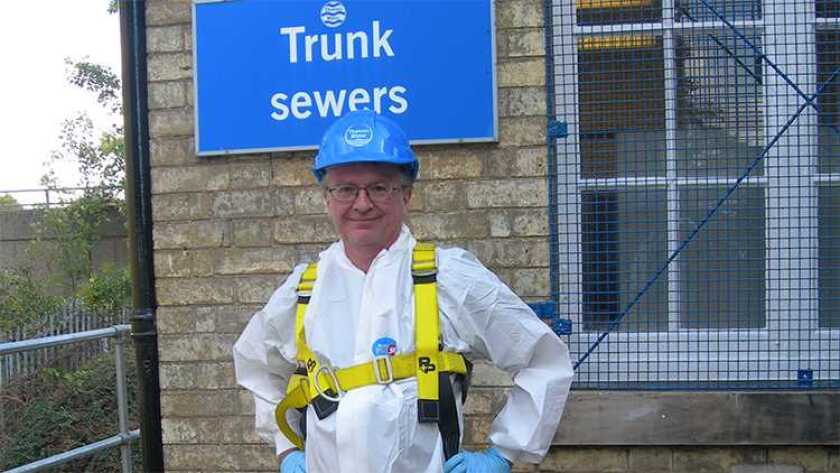Digital infrastructure minister Matt Warman said this week: “The cost of digging up roads and land is the biggest obstacle telecoms companies face when connecting hard-to-reach areas to better broadband, but beneath our feet there is a vast network of pipes reaching virtually every building in the country.”
He has started a competition, called Fibre in Water, to allocate up to £4 million to pilot projects that can use pipes to deliver fibre in hard-to-reach areas.
But Warman, a minister at the Department of Digital, Culture, Media and Sport (DCMS), appears to have missed several things in his approach. First, 5G-based fixed wireless access (FWA) will shortly be able to deliver broadband at ultra-fast speeds to areas that are unservable by fibre; and secondly, by the end of 2021 people across the UK will have access to low-Earth-orbit (LEO) satellite networks, such as that being created by OneWeb, which the UK government has backed with US$500 million of taxpayers’ money.
But there’s a third reason that Warman’s advisers have missed entirely. The idea has been considered and rejected a number of times since at least 1983.
On 29 March of that year, when Warman was 17 months old, Kenneth Baker, then minister for information technology in Margaret Thatcher’s government, discussed the same subject in a parliamentary debate on the future of BT, which was then being privatised.
It was a quite remarkable debate, in which members of parliament with no known technical experience discussed the difference between copper and fibre, and between a star configuration and a tree-and-branch approach to cable topography. And they touched on the difference between voice and data traffic.
There was one politician in that debate who knew what he was talking about: John McWilliam, a former telephone engineer. The next time a telecoms engineer was a member the UK’s House of Commons was Chi Onwurah, elected in 2010 for the neighbouring constituency to McWilliam’s. She spoke about fibre at our Digital Infra Leaders conference in June 2021.
Baker, who was doing in 1983 the job Warman is doing today, mentioned in the debate that “the Quantel company, which is a world leader in certain types of television equipment and which employs many hundreds of people, is tying up with Cabletime of California and advancing proposals and technology for using the existing network of drains and sewers for cable provision”.
The Financial Times followed up with a long report on 5 September 1983 on Peter Michael, a “dark-haired, dapper … whizz-kid”, deputy chairman of a UK company, United Engineering Industries (UEI), that had acquired Quantel and had founded Cabletime. In fact Quantel was a UK start-up, but had set up a joint venture with a US equipment company, Times Fiber, with which it was exploring using sewers and the water system for fibre.
(At this point I should declare a personal interest: Joan Gray, who wrote that Financial Times article in 1983, is my wife.)
But the collective development by Quantel, Cabletime – which was based in Newbury, the home from 1985 of Vodafone – and Times Fiber came to nothing. The idea of using utility pipes to carry fibre cables was dropped, at least for a time.
But a decade ago, Geo Networks, a UK company that Zayo bought in 2014, won the right to put fibre on the walls of the sewers owned and run by Thames Water in London.
In October 2011 Geo invited me (see picture) to inspect its work: as everyone will say who ever goes down the London sewers, which were built in the 1860s, they’re in amazing condition. Geo’s – now Zayo’s – fibre snakes along the walls well above the, ahem, water level.
Zayo still uses the sewers to get its customers’ telecoms traffic around London, but they don’t use pipes for clean water and they don’t emerge through your bathroom.
Germany revisited the idea in 2013, when the Umwelt Bundesamt (UBA, Federal Environment Agency) studied the idea of broadband through water pipes. The government department rejected the project outright. UBA vice president Thomas Holzmann said: “Even if data cable systems are sterilised, the additional construction work to the drinking water network always entails the risk of dirt, micro-organisms and pathogens entering drinking water.”
He added: “If local contamination occurs in water pipes and this is compounded by the presence of data cables, it is much more difficult to uncover its causes. The additional cable systems and connection points give rise to numerous new sources of dirt, pathogens and pollutants which then will all have to be checked.”
That report is online, in English. Warman used to be a technology journalist at the Daily Telegraph in London, so ought to have been able to do his own research. Perhaps one of his officials at DCMS can pass it on to him?
Maybe he should also have a word with his predecessor. Almost four decades on, he’s now 86, a life peer in the UK’s upper house, and bears the name Baron Baker of Dorking. Baker will probably agree that the idea should go down the pan.






